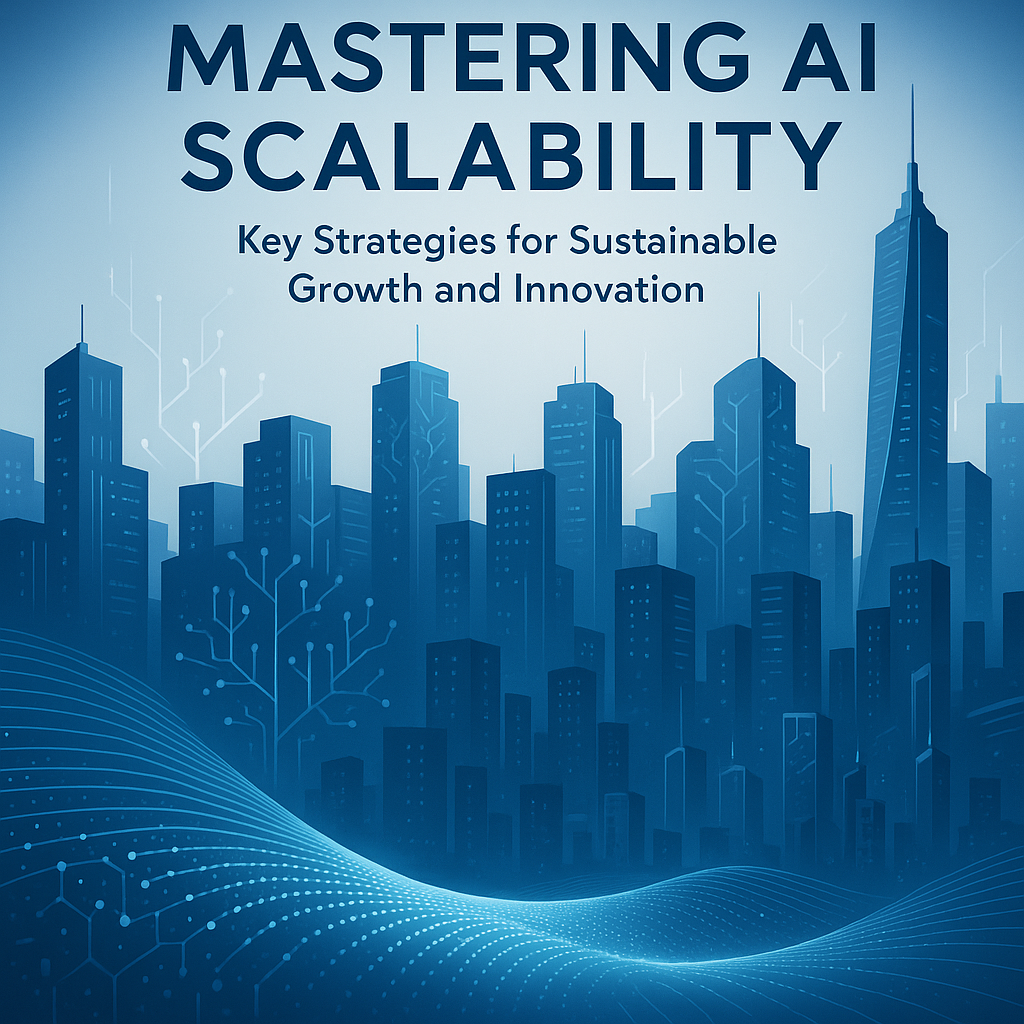Mastering Scalability in AI Development: Strategies for Sustainable Growth and Business Innovation
The Imperative of Scalability in AI-Driven Systems
Artificial intelligence is reshaping the landscape of technology management and business operations at an unprecedented pace. As enterprises integrate AI capabilities into their business strategy, the demand for AI systems that can grow seamlessly alongside evolving needs has reached critical importance. Scalability in AI development isn’t just a technical requirement — it’s a catalyst for sustained business innovation and long-term competitive advantage.
Building scalable AI-driven systems requires a comprehensive understanding of software development intricacies, engineering principles, and systems design, combined with an eye on technology trends shaping the future of computing. This article explores best practices to design AI solutions that not only perform effectively under initial loads but also maintain performance, adaptability, and reliability as demand expands.
Architecting AI Systems with Scalability in Mind
At the heart of scalable AI development lies strategic systems design. Scalability starts with modularity: decomposing complex AI models and pipelines into smaller, independent components that can be developed, tested, deployed, and scaled individually. Leveraging microservices architecture in AI engineering facilitates agile experimentation, iterative improvement, and efficient resource allocation.
Another crucial aspect is decoupling data ingestion, model training, and inference processes. By treating these as distinct services, organizations can optimize each segment according to its unique performance and resource requirements. This approach enhances fault tolerance and simplifies maintenance, allowing business operations to continue smoothly even when a subsystem undergoes upgrades or scaling.

Optimizing Machine Learning Pipelines for Growth
Machine learning lies at the core of many AI applications, and scalable ML pipelines are essential to support increasing datasets and user demands. Effective data management is fundamental: employing distributed storage and processing frameworks, such as Apache Hadoop or Spark, ensures that data flows efficiently through feature engineering, training, and evaluation stages.
Automating model retraining and validation pipelines enhances adaptability to shifting data patterns and user behaviors, a requirement critical for marketing and robotics applications where realtime responsiveness is vital. Incorporating continuous integration and continuous deployment (CI/CD) practices specifically tailored for AI accelerates development cycles and reduces risks associated with large-scale rollouts.
Technology Management for Scalability and Performance
Scalability is not solely a matter of engineering but a facet of comprehensive technology management. Prioritizing a culture of cross-functional collaboration aligns software developers, data scientists, engineers, and business stakeholders around shared goals — driving coherence in system requirements and performance expectations.
Resource orchestration tools like Kubernetes and cloud-native services provide elasticity, adjusting computing resources dynamically to match workload fluctuations. This reduces costs and ensures steady performance, a necessity for AI-driven business strategy where demand can spike unpredictably.
Monitoring and observability frameworks tailored to AI models—tracking metrics such as model latency, accuracy drift, and inference throughput—enable proactive troubleshooting and capacity planning. These measures ensure AI-powered applications sustain their business value as they are scaled.
Balancing Innovation with Sustainable Scalability
While pushing the envelope of technology trends like advanced neural networks and reinforcement learning, scalable AI development emphasizes maintainability and user-centric design. Complex AI models with millions or billions of parameters must offer explainability and interpretability to support business decision-making and regulatory compliance.
Scaling AI for marketing and robotics applications demands seamless integration with existing infrastructure and user workflows. Empathetic design focuses on transparency and ease-of-use, expanding adoption and ultimately driving business outcomes.
Innovation, when paired with scalable engineering and programming discipline, unlocks new avenues for growth. For instance, federated learning enables decentralized model training across distributed devices, opening possibilities for personalized AI experiences without compromising data privacy—a significant breakthrough for marketing and customer engagement.
Future-Proofing AI Systems Amid Rapid Evolution
The future of computing is tightly intertwined with advances in artificial intelligence. Ensuring scalability today prepares organizations for tomorrow’s technologies, including quantum computing and more autonomous AI agents. Scalable architectures allow incremental integration of emerging capabilities with minimal disruption.
Organizations should foster continuous learning and skill development among engineering teams to stay ahead of technology trends. Maintaining modular and extensible codebases aids in adapting AI models and infrastructure swiftly, preserving business agility in dynamic markets.
Ultimately, success in AI development depends on the fusion of rigorous programming, visionary systems design, and a collaborative, user-focused mindset that respects the intricate balance between innovation and operational sustainability.
Scalable AI as a Strategic Business Asset
Scalable AI solutions serve as a powerful lever for transforming business operations and accelerating business strategy evolution. By embedding scalability into core AI development practices, organizations unlock efficiencies that translate into enhanced customer experiences, optimized resource utilization, and robust competitive positioning.
Whether advancing robotics automation, refining predictive marketing algorithms, or optimizing complex engineering workflows, scalability ensures AI-driven systems can sustain impact and growth over time. It is a foundational principle that distinguishes fleeting technology projects from strategic, transformative business assets.
As AI continues to permeate sectors and blend with emerging technologies, mastering scalable AI development is not optional—it’s indispensable for businesses aspiring to lead in the new era of technology-led innovation.



